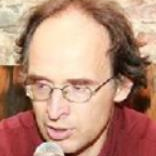Current Research in Nematic Liquid Crystal Nanocomposites
A special issue of Nanomaterials (ISSN 2079-4991). This special issue belongs to the section "Nanocomposite Materials".
Deadline for manuscript submissions: 20 August 2024 | Viewed by 3048
Special Issue Editors
Interests: liquid crystals; nanocomposites; phase transitions; elasticity; instabilities; electrolytes; wetting
2. Jožef Stefan Institute, Jamova 39, 1000 Ljubljana, Slovenia
Interests: liquid crystals; nanocomposites; phase transitions; instabilities; wetting; topological defects
Special Issues, Collections and Topics in MDPI journals
Special Issue Information
Dear Colleagues,
Liquid crystals (LCs) combine the fluidity of ordinary liquids with the long-range order of crystalline matter. This combination gives rise to the high responsiveness of LCs at external fields/stimuli (electric and magnetic field, light, mechanical stress, chemical environment, etc.) which are at the origin of most LCs’ applications and devices. In recent decades, an important activity in thermotropic and lyotropic liquid crystalline materials has been the investigation of nanoparticles’ impact in LC hosts. Of particular interest is the discovery of effective materials exhibiting anomalously large responses or qualitatively new features. This research field is continuously enlarged and diversified both because new liquid crystalline phases have been discovered and because a large variety of novel nanoparticle types have been synthesized.
This Special Issue will present comprehensive research outlining progress on the impact of nanoparticles in liquid crystal physics, the emergence of new properties at the nanocomposite systems, and improvements in the performance of liquid crystal devices, as well as the invention of new kinds of applications and devices. This also includes the major problem of dispersion stability, surface activation, the use of a liquid crystal host to order nanoparticles, and theoretical description and simulations of nanocomposite systems. We invite authors to contribute original research articles and review articles covering current progress on liquid crystal nanocomposites.
Dr. Lelidis Ioannis
Prof. Dr. Samo Kralj
Guest Editors
Manuscript Submission Information
Manuscripts should be submitted online at www.mdpi.com by registering and logging in to this website. Once you are registered, click here to go to the submission form. Manuscripts can be submitted until the deadline. All submissions that pass pre-check are peer-reviewed. Accepted papers will be published continuously in the journal (as soon as accepted) and will be listed together on the special issue website. Research articles, review articles as well as short communications are invited. For planned papers, a title and short abstract (about 100 words) can be sent to the Editorial Office for announcement on this website.
Submitted manuscripts should not have been published previously, nor be under consideration for publication elsewhere (except conference proceedings papers). All manuscripts are thoroughly refereed through a single-blind peer-review process. A guide for authors and other relevant information for submission of manuscripts is available on the Instructions for Authors page. Nanomaterials is an international peer-reviewed open access semimonthly journal published by MDPI.
Please visit the Instructions for Authors page before submitting a manuscript. The Article Processing Charge (APC) for publication in this open access journal is 2900 CHF (Swiss Francs). Submitted papers should be well formatted and use good English. Authors may use MDPI's English editing service prior to publication or during author revisions.
Keywords
- nanocomposites
- liquid crystals
- nanoparticles
- dispersion stabilization
- nanoparticle organization
- order
- surface functionalization
- topological defects
- theory and simulations
- characterization and experimental methods
- applications and devices







